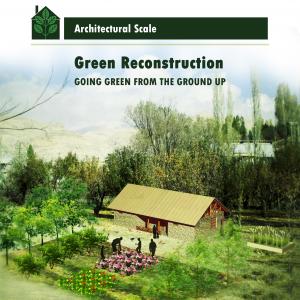| |
Green Reconstruction: Going Green from the Ground Up
Solebon, Tehran, Iran
Ameneh Karimian
Solmaz Arzhangi
Shahid Beheshti University, Reconstruction Research Department (RRD), Tehran, Iran
Alireza Fallahi
Full Document (PDF)
Abstract
On 2005 the construction of a new dam called Nam-roud, in Firouzkouh (Tehran province, Iran) affected Solebon County and faced the residents with a forced relocation. The main aim of the project is to minimize the adverse effects of the process on the residents, and make it a resettlement instead of relocation. To meet this aim the concepts of a Green Reconstruction is seek.
In the phase of site selection and layout, geographical, social, economic and environmental criteria was considered. The new site is less prone to natural hazards, and has the potential for agriculture.
For livelihood continuity two solutions is proposed: activating the tourist industry and starting Community Gardening. The synthesis of these two solutions is presented in a Green Corridor. By allocating a Community Garden to each 6 families along the corridor, residents can start growing their own food together from the start and also they can present the products to the tourists at the same time.
In housing reconstruction the focus is on reuse-recycle: the materials would be provided from their current units and the waste water of the houses would be recycled by using treatment plants. This green approach can be also conducted in a larger scale to treat the street runoff water. The treated water would be used for irrigation both in private gardens and in Community Gardens.
|
| |

image of the settlement (architectural scale or example of unit)

image of the settlement (urban scale or group of housing units)

diagram of the actors involved and the relationships between them
|
|



